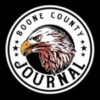By: Tara Blue
Ashland resident Charles Donigian thought he was doing the right thing when he agreed to a city project to help alleviate a neighbor’s ongoing stormwater issue. He never imagined the project would wash problems from the neighbor’s yard to his.
In February 2021, Donigian was approached by neighbor Dan VandeVoorde asking for his approval on a city project that would fix VandeVoorde’s ongoing stormwater drainage issue. According to city documents, VandeVoorde had stormwater drainage issues since 2010, and his yard and home on Billy Joe Sapp Drive had repeatedly flooded over the years.

Stormwater runoff at 401 Billy Joe Sapp Drive on April 10, 2013, submitted to Ashland Board of Aldermen by property owner Dan VandeVoorde
VandeVoorde had previously communicated with his Aldermen, Allstate Engineering Consultants, and the city’s streets department requesting that the city resolve his stormwater issue. The City Administrator at the time, Tony St. Romaine, stated that the city did not have the funds to pay for such a project, and furthermore stated that VandeVoorde’s stormwater issue was created by the developer, not the city (Board of Aldermen meeting, Dec. 17, 2019).
After VandeVoorde was hired as the Plan Reviewer/Building Inspector for the city of Ashland in Oct. 2020, the plan moved forward. Allstate Consultants did a preliminary analysis and gave Ashland Public Works Department several options. From the submitted options, Option 3b was approved by the Board of Aldermen on Jan. 19, 2021. As the new City Plan Reviewer/Building Inspector, and as their neighbor, VandeVoorde was asked to gain verbal approval from all the affected homeowners for the newly approved project. The chosen option included re-routing the surface-level stormwater runoff from VandeVoorde’s yard through Donigian’s back yard below the ground. It would require Donigian to sign an easement, giving the city permission to access Donigian’s backyard to execute the project. According to the preliminary engineering plans that were approved by the city, the route was to follow Donigian’s backyard west fence line and run behind his shed.
Donigian wanted to do the neighborly thing, as he empathized with VandeVoorde’s unfortunate situation. Donigian then verbally agreed to the preliminary plan that was presented to him, but also expressed concerns about existing runoff issues in his backyard. He was afraid that the project would make the runoff worse if not completed properly. Emails acquired from Donigian’s Sunshine Law request show that Allstate and the Ashland Public Works Department had already changed the original plans in January, only eight days after the city approved them, but Donigian says they did not communicate the change to him when VandeVoorde presented the original plans to him in February.

The preliminary plan originally showed the junction box and pipe running on the west side, behind Donigian’s shed.
Donigian says he was unaware of the changes until the final engineering plans were sent to him in May. Allstate and Ashland Public Works had changed the plan to run the subsurface pipe and junction box 20-30 feet east of his west fence line and had not communicated this with him. He also says that his concerns about runoff had not been addressed. This is when Donigian says he began to question the integrity and transparency of those in charge of the project. Displeased with the final plans, he then told the city he would not sign the paperwork until the existing drainage issues in his yard were addressed.
A meeting was then set up with Allstate Consultant Wes Bolton and Public Works Director James Creel in June to address Donigian’s concerns. Donigian says that during the meeting, Creel assured him that Public Works would move his shed to ensure accessibility since the revised plans ran the pipe and junction box in front of his shed and says that Bolton guaranteed him that he would be personally involved to oversee the grading to address the existing erosion issues. Satisfied with the response, Donigian signed the easement paperwork the next day and the project began in May 2022.
Donigian says that the revisions that he, Creel, and Bolton agreed upon never came to fruition, and that the project has created new issues in his backyard. He says the city did not move his shed, did not properly grade, did not stay within the easement area, and changed the topography of his backyard to make it the lowest elevation of the surrounding yards. He says they also built a swale through his backyard that was not on any of the engineering plans, and placed excavated clay, which is widely considered to be a poor soil type for drainage, underneath the sod which covered the subsurface pipe. He says the area which has clay is not draining properly and is holding water. Donigian also has sink holes in his backyard over three feet deep, causing a safety hazard for his 18-month-old son Harry.
Read full article in this week’s Journal…









Facebook Comments